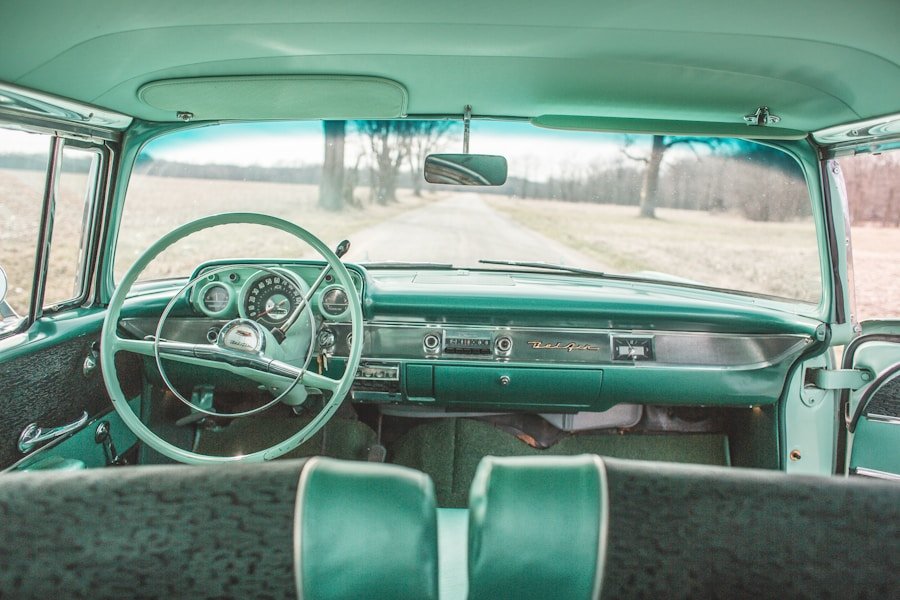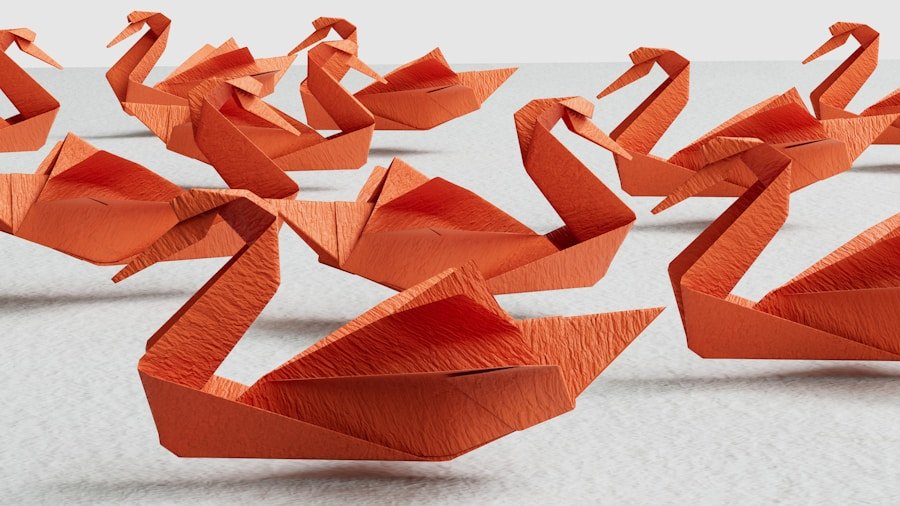Special needs children encompass a diverse group with varying physical, cognitive, and emotional requirements. These children may have conditions such as autism spectrum disorder, cerebral palsy, Down syndrome, or sensory processing disorders, each presenting unique challenges that can affect their daily activities and overall quality of life. Understanding these needs is crucial for caregivers and educators alike, as it allows them to provide appropriate support and resources tailored to each child’s specific situation.
For instance, a child with sensory sensitivities may require clothing made from soft, breathable fabrics that do not irritate the skin, while a child with mobility challenges may need adaptive equipment to facilitate movement and independence. Moreover, the emotional and psychological aspects of special needs must not be overlooked. Many children face social stigmas or feelings of isolation due to their differences.
This can lead to anxiety or low self-esteem, making it essential to choose gear that not only meets their physical needs but also promotes confidence and inclusion. For example, adaptive sports equipment can empower children to participate in physical activities alongside their peers, fostering a sense of belonging and achievement. By recognizing the multifaceted nature of special needs, caregivers can better advocate for their children and ensure they have access to the right tools for success.
Key Takeaways
- Understanding the unique needs of special needs children is crucial when navigating gear choices.
- Navigating the world of adaptive gear for special needs children requires careful consideration and research.
- Factors to consider when choosing gear for special needs children include mobility, comfort, and safety.
- Finding the right fit for special needs children involves seeking out specialized options and considering customization.
- Properly fitting gear is essential for the comfort, safety, and well-being of special needs children.
Navigating the World of Adaptive Gear for Special Needs Children
The market for adaptive gear has expanded significantly in recent years, offering a wide array of products designed specifically for special needs children. This includes everything from specialized seating systems and mobility aids to sensory-friendly clothing and communication devices. However, navigating this landscape can be overwhelming for parents and caregivers who may not know where to start.
It is essential to research various options and consult with professionals such as occupational therapists or special education teachers who can provide valuable insights into what gear may be most beneficial for a child’s unique circumstances. In addition to traditional retailers, many organizations and online platforms focus on adaptive gear for special needs children. These resources often provide detailed product descriptions, user reviews, and even videos demonstrating how the gear works in real-life situations.
This information can be instrumental in helping caregivers make informed decisions. Furthermore, some companies offer trial periods or rental options, allowing families to test gear before committing to a purchase. This flexibility can alleviate financial concerns and ensure that the chosen equipment truly meets the child’s needs.
Factors to Consider When Choosing Gear for Special Needs Children
When selecting gear for special needs children, several factors must be taken into account to ensure the best fit and functionality. First and foremost is the child’s specific condition and abilities. For instance, a child with limited mobility may require a wheelchair that is lightweight and easy to maneuver, while a child with sensory processing issues might benefit from noise-canceling headphones or weighted blankets.
Here is a great resource for must-have items for special needs moms and their kids. Understanding the child’s individual strengths and challenges is key to making appropriate choices.
Another critical factor is the child’s age and developmental stage.
Gear that is suitable for a toddler may not be appropriate for a teenager, even if they share similar needs. Additionally, as children grow, their requirements may change, necessitating regular assessments of their gear.
Durability is also an important consideration; adaptive gear should withstand daily use while remaining comfortable and functional. Parents should look for products made from high-quality materials that can endure wear and tear over time.
Finding the Right Fit: Tips for Selecting Gear for Special Needs Children
| Category | Tips |
|---|---|
| Wheelchairs | Consider the child’s specific needs and abilities when selecting a wheelchair. |
| Adaptive Clothing | Look for clothing that is comfortable, easy to put on, and meets the child’s specific needs. |
| Orthotic Devices | Consult with a healthcare professional to ensure the proper fit and function of orthotic devices. |
| Communication Devices | Explore different options and consider the child’s communication abilities and preferences. |
| Toys and Recreational Equipment | Choose toys and equipment that are safe, age-appropriate, and cater to the child’s interests and abilities. |
Finding the right fit for adaptive gear is essential for both comfort and effectiveness. One of the most important tips is to involve the child in the selection process whenever possible. Allowing them to express their preferences can lead to better acceptance of the gear and increased motivation to use it.
For example, a child may feel more enthusiastic about wearing a specialized brace if they can choose its color or design. This sense of ownership can significantly enhance their willingness to engage with the equipment.
Additionally, caregivers should prioritize proper measurements when selecting gear.
Many products come in various sizes, and accurate measurements can help ensure a snug yet comfortable fit. It is advisable to consult sizing charts provided by manufacturers and consider any specific recommendations from healthcare professionals. Trying on gear before purchasing—when feasible—can also help identify any potential issues with fit or comfort.
Ultimately, taking the time to find the right fit can make a significant difference in a child’s experience with adaptive gear.
Customizing Gear for Special Needs Children: Options and Considerations

Customization plays a vital role in ensuring that adaptive gear meets the unique needs of special needs children. Many manufacturers offer customizable options that allow caregivers to tailor products according to individual requirements. For instance, wheelchairs can often be fitted with specialized seating systems that provide additional support or adjustability based on the child’s posture and comfort level.
Similarly, clothing brands may offer modifications such as magnetic closures or adjustable waistbands to accommodate various physical challenges. When considering customization, it is essential to weigh both functionality and aesthetics. While practical adjustments are crucial for usability, many children also desire gear that reflects their personality and style.
Collaborating with the child during the customization process can lead to more satisfactory outcomes. Additionally, caregivers should remain informed about any potential costs associated with customization, as some modifications may require additional funding or insurance coverage.
The Importance of Properly Fitting Gear for Special Needs Children
Properly fitting gear is not merely a matter of comfort; it has significant implications for health and safety as well. Ill-fitting equipment can lead to physical discomfort or even injury over time. For example, a poorly fitted wheelchair may cause pressure sores or musculoskeletal issues if not adjusted correctly to support the child’s body properly.
Similarly, clothing that is too tight or restrictive can hinder movement and exacerbate sensory sensitivities. Moreover, properly fitting gear can enhance a child’s overall quality of life by promoting independence and confidence. When children feel comfortable in their adaptive equipment, they are more likely to engage in activities that foster social interaction and skill development.
This sense of empowerment can have lasting effects on their self-esteem and willingness to participate in various environments, whether at home, school, or in community settings.
Resources and Support for Finding Gear for Special Needs Children
Finding appropriate gear for special needs children can be challenging, but numerous resources are available to assist families in this journey. Organizations such as Easterseals and The Arc provide information on adaptive equipment options and may even offer financial assistance programs for families in need. Additionally, online forums and support groups can connect parents with others facing similar challenges, allowing them to share experiences and recommendations regarding specific products.
Healthcare professionals also play a crucial role in guiding families toward suitable gear options. Occupational therapists, physical therapists, and special education teachers can provide personalized assessments and recommendations based on their expertise in working with special needs children. Furthermore, many local communities have organizations dedicated to supporting families with special needs through workshops or informational sessions focused on adaptive gear selection.
By leveraging these resources, families can navigate the complexities of finding the right equipment more effectively and confidently.
FAQs
What are some factors to consider when choosing gear for special needs children?
Choosing gear for children with special needs requires careful consideration of their individual needs and challenges. Factors include:
•Specific diagnosis and its impact: Different diagnoses present unique challenges. A child with autism may have sensory sensitivities, while a child with cerebral palsy may have mobility limitations.
•Physical limitations: Consider mobility, strength, and range of motion.
•Sensory sensitivities: Think about textures, sounds, and lights.
•Cognitive abilities: Choose gear that is appropriate for the child’s developmental stage and cognitive abilities.
•Safety: Prioritize safety features and ensure the gear is appropriate for the child’s size and weight.
•Ease of use: Consider how easy the gear is for the child and caregiver to use.
•Growth and adaptability: Choose gear that can adapt as the child grows and their needs change.
What are some options and considerations for customizing gear for special needs children?
Customization can significantly improve the functionality and comfort of gear. Options include:
•Adaptive seating and positioning: Modified chairs, strollers, and car seats can provide better support and posture.
•Communication aids: Adding switches or communication boards to toys and equipment can enhance interaction.
•Sensory modifications: Adjusting textures, sounds, and lights can create a more comfortable experience.
•Mobility aids: Adding ramps, handles, or other modifications can improve accessibility.
•Working with therapists: Occupational and physical therapists can offer valuable insights and recommendations for customization.
Why is it important for gear to properly fit special needs children?
Proper fit is crucial for safety, comfort, and functionality. Ill-fitting gear can exacerbate existing challenges, create new problems, and hinder development. A well-fitted stroller, for example, can provide proper support and prevent pressure sores, while correctly sized adaptive clothing can promote independence in dressing.
What are some resources and support available for finding gear for special needs children?
Numerous resources are available:
•Therapists: Occupational therapists, physical therapists, and speech-language pathologists can assess needs and recommend appropriate gear.
•Special needs organizations: Organizations like the National Disability Insurance Scheme (NDIS) and other local groups offer information, support, and sometimes financial assistance.
•Online communities and forums: Connect with other parents and caregivers to share experiences and recommendations.
•Durable medical equipment (DME) suppliers: These suppliers specialize in adaptive equipment.
How can one navigate the world of adaptive gear for special needs children?
Navigating adaptive gear can feel overwhelming. Start by:
•Understanding your child’s specific needs: A thorough assessment by therapists is crucial.
•Researching different options: Explore various brands, products, and features.
•Reading reviews: Learn from other parents’ experiences.
•Trialing equipment whenever possible: Ensure the gear is a good fit for your child.
What are some tips for selecting gear for special needs children?
Involve your child in the process: Whenever possible, let them try out different options and express their preferences.
•Consider long-term needs: Think about how the gear will adapt as your child grows.
•Prioritize safety and comfort: These are paramount considerations.
•Don’t be afraid to ask for help: Therapists and other professionals can provide valuable guidance.
How can one understand the unique needs of special needs children when it comes to gear choices?
Understanding comes through:
•Open communication with therapists and medical professionals: They can explain your child’s specific needs and how they relate to gear choices.
•Observation: Pay attention to your child’s reactions to different types of gear.
•Patience and trial-and-error: Finding the right gear may take time and experimentation.
What are some common gear choices for special needs children?
Common choices include:
•Adaptive strollers and wheelchairs: For mobility support.
•Standing frames: To promote weight-bearing and improve bone density.
•Communication devices: To facilitate communication.
•Sensory toys and equipment: To address sensory needs.•Adaptive clothing: To promote independence in dressing.
•Specialized car seats: For safe transportation.































